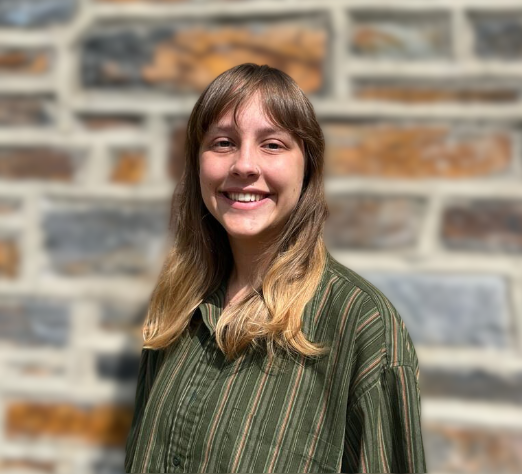Biomechanics
(D-159) Understanding the reciprocal crosstalk of mechanical and inflammatory cues on pulmonary fibrosis

Nikki Angel (she/her/hers)
Graduate Student
Duke University
Durham, North Carolina, United States- BH
Brenton Hoffman
Associate Professor of Biomedical Engineering
Duke University, United States - SV
Shyni Varghese
PI
Duke University, United States
Presenting Author(s)
Primary Investigator(s)
Last Author(s)
Pulmonary fibrosis (PF) is a progressive disease, with no known cure, characterized by excessive deposition of extracellular matrix (ECM) leading to decreased lung capacity and, eventually, organ failure. Both mechanics and inflammation are individually recognized to contribute to pathogenesis of PF. Specifically, mechanical alterations, such as increased tissue stiffness and altered breathing cycles have been shown to create a positive feedback loop with resulting fibroblast activation to drive fibrinogenesis. Additionally, acute inflammation is commonly seen at the early stages of fibrinogenesis, and some pro-inflammatory cytokines (e.g., IL-1β) have been shown to upregulate fibroblast activation.However, the crosstalk between mechanics and inflammation, termed mechano-inflammation, on fibrogenesis is not well understood. A mechanistic understanding of mechano-inflammation on fibroblast activation during fibrogenesis could lead to the identification of new therapeutic targets. A simple in vitro model is used to study the stiffness dependent role of soluble factors on fibroblast activation. Specifically, polyacrylamide (PAm) hydrogels will be used to mimic changes in matrix stiffness and TGF-β and IL-1β will be introduced under both conditions to induce fibroblast activation as known fibrotic and pro-inflammatory factors, respectively. Cell number, actin organization, and nuclear shuttling will be quantified using immunofluorescent staining (IF) in response to exposure to TGF-β and IL-1β, individually and synergistically.
Materials and Methods::
For this study, we are developing an in vitro model to examine the co-regulation of matrix stiffness and pro-inflammatory stimuli on normal human lung fibroblasts (NHLFs). Polyacrylamide (PAm) hydrogels, functionalized with fibronectin, of high and low elastic modulus (i.e., 3kPa and 25kPa, respectively) is used to model altered tissue stiffness; transforming growth factor-β (TGF-β) is used to induce fibroblasts activation; and IL-1β is used as a model pro-inflammatory cytokine. NHLFs are seeded on PAm gels of both stiffnesses, allowed to grow for 24 hours, and serum starved before exposure to the following conditions: no additives, TGF-β only, IL-1β only, and TGF-β & IL-1β. After fixation, total cell number per field of view (FOV) for each condition is determined using a DAPI stain and is normalized to cell number per FOV after serum starving. The actin cytoskeleton is visualized using phalloidin. Moreover, to study the role of matrix stiffness and TGF- concentration on fibroblast activation, an additional round of experiments is being conducted. NHLFs are exposed to 10ng/mL, 20ng/mL, and 50ng/mL for 24 hours after serum starving in high and low stiffness matrices.
Results, Conclusions, and Discussions::
Results from our ongoing study indicates that matrix stiffness i) impacts cell number, ii) the effect of IL-1β on cell number and nuclear shape, and iii) TGF-β stimulated actin cytoskeleton organization. In the first round of experiments looking at the effect of TGF-β and IL-1β on fibroblast activation in high and low stiffnesses, the results are as follows. Groups with no soluble cues show that NHLF number per field of view (FOV) is significantly higher in high stiffness matrices compared to low stiffness matrices. Moreover, in high stiffness matrices, TGF-β and IL-1β show no significant effect on cell number, but in low stiffness conditions, IL-1β shows a positive effect on cell number. Additionally, cell shape analyses suggest IL-1β mediated changes in cell shape on both matrix stiffnesses. Nuclear circularity was quantified, and IL-1β exposed NHLFs show a significant difference in both stiffnesses compared to their non-additive counterpart. These results indicate IL-1β could have an effect on cell and nuclear shape. Results from the TGF-β concentration sweep show a positive relationship between actin cytoskeleton formation and TGF-β concentration in both high and low stiffnesses. Moreover, NHLF shape is more rectangular and spread with increasing TGF-β concentration. Finally, NHLFs in low stiffness conditions require higher levels of TGF-β concentration to induce a similar degree of cells with high actin cytoskeleton formation as their high stiffness counterparts.
Acknowledgements (Optional): :
References (Optional): : Pakshir, Pardis, and Boris Hinz. "The big five in fibrosis: Macrophages, myofibroblasts, matrix, mechanics, and miscommunication." Matrix Biology 68 (2018): 81-93.
Savin, Innokenty A., Marina A. Zenkova, and Aleksandra V. Sen’kova. "Pulmonary fibrosis as a result of acute lung inflammation: Molecular mechanisms, relevant in vivo models, prognostic and therapeutic approaches." International Journal of Molecular Sciences 23.23 (2022): 14959.
Gabasa, Marta, et al. "Interleukin-1β modulation of the mechanobiology of primary human pulmonary fibroblasts: potential implications in lung repair." International Journal of Molecular Sciences 21.22 (2020): 8417.
Mia, Masum M., Miriam Boersema, and Ruud A. Bank. "Interleukin-1β attenuates myofibroblast formation and extracellular matrix production in dermal and lung fibroblasts exposed to transforming growth factor-β1." PloS one 9.3 (2014): e91559.
